Galapagos Islands Travel Guide
The Galapagos Islands are listed on top of many travel bucket lists, and for good reason. Home to unique wildlife with such an enchanting story to tell, the pull of the archipelago is understandable. Where are the Galapagos Islands, and how did they emerge in the middle of the ocean? How did such curious creatures come to live there? How easy is it for tourists to visit the islands today? The aim of this blog is to give you the perfect insight!
Keep reading for a quick guide to Galapagos Islands Travel. All of the typical first Galapagos questions are answered, from trip planning to locations and tours.
What are the Galapagos Islands?
Known as the enchanted archipelago, the Galapagos Islands are a declared UNESCO World Heritage, a renowned National Park and one of the world’s most unique tourist destinations. Situated in the Pacific Ocean, the archipelago impresses visitors with wonderful beaches and endemic wildlife.

Where are the Galapagos Islands?
One of the most common first questions is: what country are the Galapagos islands part of? The answer is simple, The Galapagos Islands are part of Ecuador in South America! Galapagos is located approximately 1000km off of Ecuador’s coast, in the Pacific Ocean.
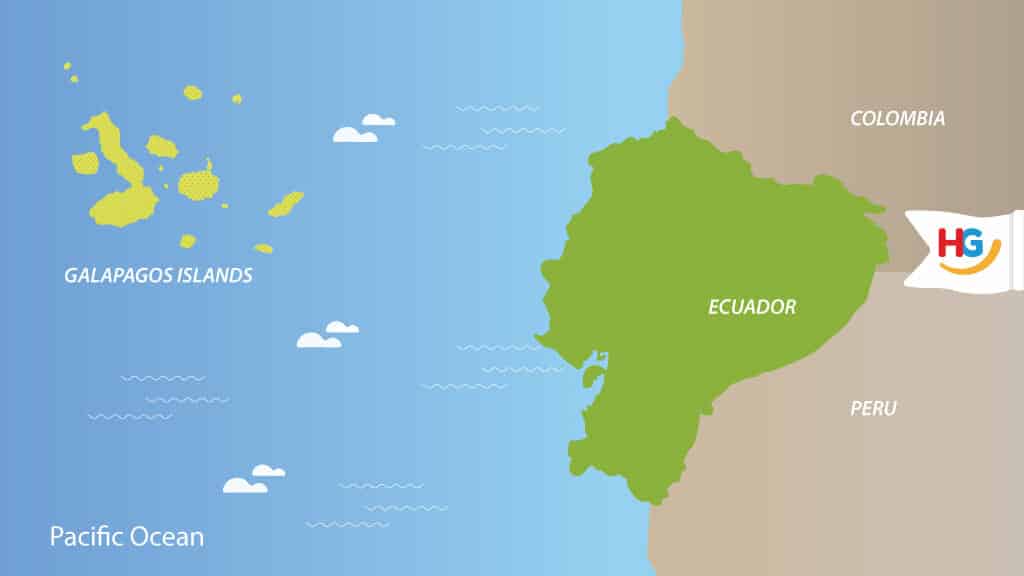
How did the Galapagos islands form?
The islands were literally born of fire! Powerful volcanic eruptions beneath the ocean led to small islands emerging from the surface. Subsequent eruptions saw the volcanos grow in size and height, with lava flows forming the shape of the islands we see today.
Ready to learn more? Check out our Galapagos Islands Volcanos blog for a more detailed explanation of the origin of Galapagos.

Photo taken From: Globe Guide Website
Who discovered the Galapagos Islands?
When he was commanded to sail to Peru, the Bishop of Panama Fray Tomás de Berlanga accidently was carried away by strong ocean currents and stumbled upon the islands. This was back on March 10th, 1535. The most famous Galapagos visitor, Charles Darwin would not visit the islands until almost 3 centuries later.
What did Charles Darwin do on the Galapagos islands?
In 1831 HMS Beagle set off from England for a five-year voyage of disacovery. On board Captain Robert Fitzroy accompanied by the medical scholar Charles Darwin who was not yet aware that the voyage would create a huge breakthrough in scientific research.
After charting the coastline of South America, the Beagle stopped over at the Galapagos Islands on its return route. Young Darwin spent 5 weeks exploring the archipelago, and collecting samples of native species of plant, bird and mammal.

It wasn’t until the return journey that Darwin observed that, although species were similar from island to island, there were also subtle and important differences altered to suit the environment of each island. Further study on Galapagos mockingbirds and finches confirmed his hypothesis.
Back in England Darwin further developed this groundbreaking work, to create his Theory of Evolution, which ultimately could be applied to the very evolution of human kind. Although his theory went against his own religious beliefs of creation from the bible, Darwin published his ideas in 1859 in “On the origin of species”, a text which changed natural history forever.
What animals live in the Galapagos islands?
The Galapagos islands are home to an impressive diversity of fauna on land and in the sea. These creatures are famous for having no fear of humans, thus creating one of the most up close and personal wildlife experiences in the world. This is due to both the remoteness of the islands, and the fact that there are so few natural predators that live there.
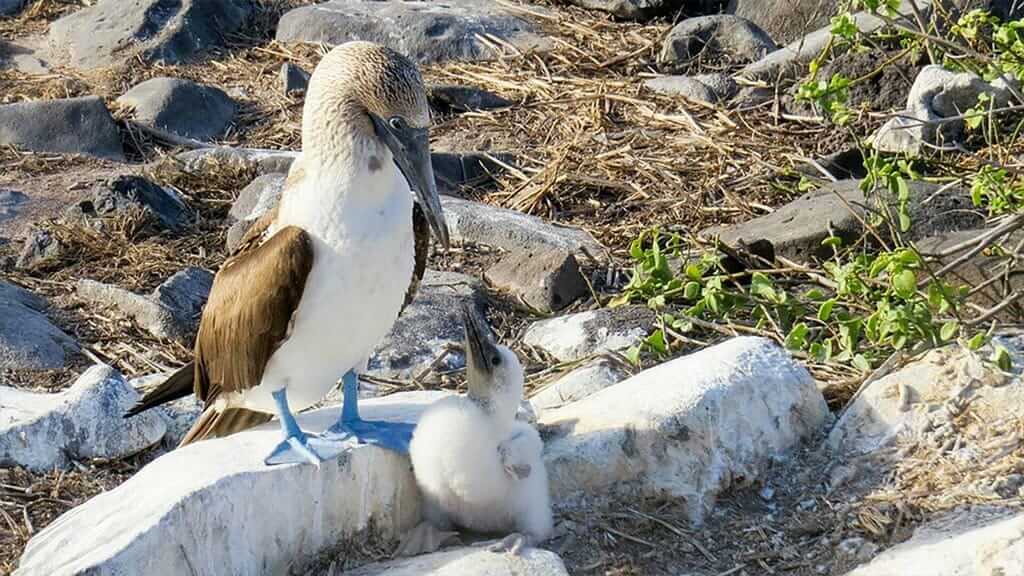
Some of the more iconic Galapagos species include: giant Galapagos tortoise, land iguana, marine iguana, Darwin Finch, blue-footed booby, sealion, Galapagos penguin, flightless cormorant, waved albatross, frigate bird, and many more.
To learn more, just jump over to our Galapagos Animals & Galapagos Birds blog posts.
How did animals get to the Galapagos islands?
All of the Galapagos bird and animals are related in some way to species that were found on South American mainland in the past. So how did they find their way out to a remote island chain in the middle of the Pacific Ocean?
The general theory is that their ancestors were washed out to sea aboard floating foliage or debris from mainland rivers. Floating on ocean currents, they eventually arrived to different islands across the archipelago. Forced to make a new home of each island, unique sub species began to evolve depending on the different food sources and habitat that each creature encountered.

How many islands in the Galapagos?
The Galapagos Archipelago is made up of 127 islands, rocks and islets. Of those islands, 13 can be considered to be large, and 6 small. Check out our interactive Galapagos map for more information about each island.
The Galapagos islands were first recognised as a National Park in the year 1959, and later expanded into a larger protected area known as the Galapagos Marine Reserve. Covering a total area of 133k square kilometers, Galapagos is one of the largest and most diverse marine reserves on the planet.
Only 3% of the total land area is inhabited by human settlements, on the islands of Santa Cruz, San Cristobal, Isabela and Floreana.

How do you get to the Galapagos islands?
Since the Galapagos Islands are located 1000km off shore, visitors must fly there. Daily flight departures take off from the Ecuadorian mainland cities of Quito and Guayaquil. Within 2-3 hours in the air, tourists can take their first step onto the Galapagos islands.
Currently two different airlines have scheduled flights to Galapagos: Avianca and Latam. Both operate to the two main airports that serve the islands: San Cristobal and Baltra.
Please check out our How to get to Galapagos blog for a more detailed answer to this question.

Requirements to Enter Galapagos Islands
The protection of the delicate Galapagos Islands environment and the animals that live there is of course a high priority. Some of the following Galapagos entry requirements are based on that:
- Valid Passport (or cedula ID for Ecuadorian citizens / residents).
- Return flight tickets.
- Proof of hotel or cruise booking.
- Covid-related entry documents (these are subject to change).
- Copy of travel or medical insurance.
In addition, airport controls/processes include:
- Inspection of bags by the Galapagos Biosecurity Agency to avoid the entry of invasive species.
- Emission of a mandatory $20 transit control card.
- Payment of $200 per person Galapagos National Park Fee, which goes towards the maintenance of visitor sites and conservation projects.

How much does it cost to go to the Galapagos islands?
The cost of a Galapagos Islands vacation varies according to type & duration of trip, as well as level of comfort / luxury. Both Galapagos cruises and land tours are available to suit a wide range of different budgets and needs.
Contact us for a FREE GALAPAGOS QUOTE – we’ll be happy to help you find a suitable tour based on your vacation budget.
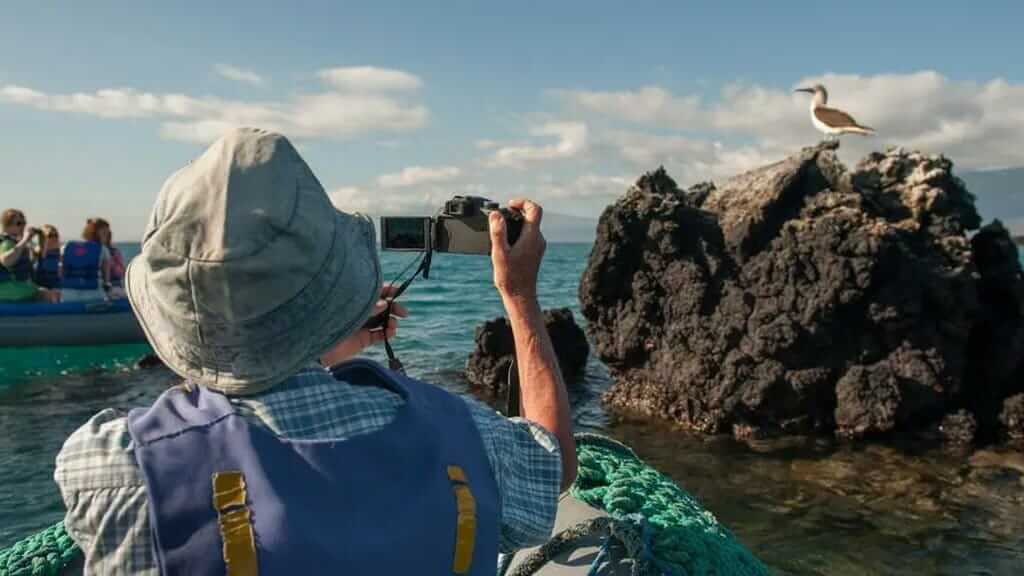
What is the Best Galapagos Cruise for 2022?
Lots of different Galapagos cruise yachts are available, from small catamarans to larger cruise ships. Here are some of our favorite 2022 Galapagos cruise options:
Natural Paradise: The Natural Paradise is an intimate, customized vessel offering luxury Galapagos cruising. All accommodations have comfortable beds, air-conditioning, private bathrooms with hot water, and plenty of space for your belongings. A real bonus of the upper deck cabins are the private balconies to enjoy spectacular Galapagos views.

Anahi catamaran: The Anahi catamaran is an impressive double-hulled power yacht, which offers increased stability while cruising. The social area includes a library, TV-DVD room, comfortable dining room and lounge area, a charming bar, ample sundeck with comfy chairs, and a large Jacuzzi for six people.
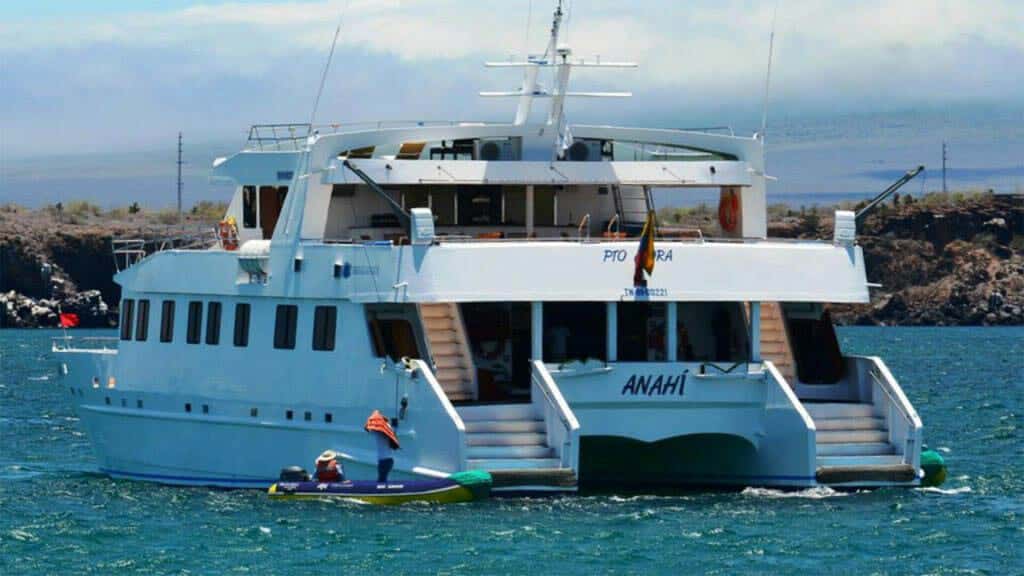
Mary Anne: The Mary Anne yacht is a breathtaking three mast motor sailboat with undeniable style and charm; perfect for a romantic cruise at the enchanted Galapagos Islands! It proudly holds Smart Voyager certification, recognizing their strict adherence to conservation standards.
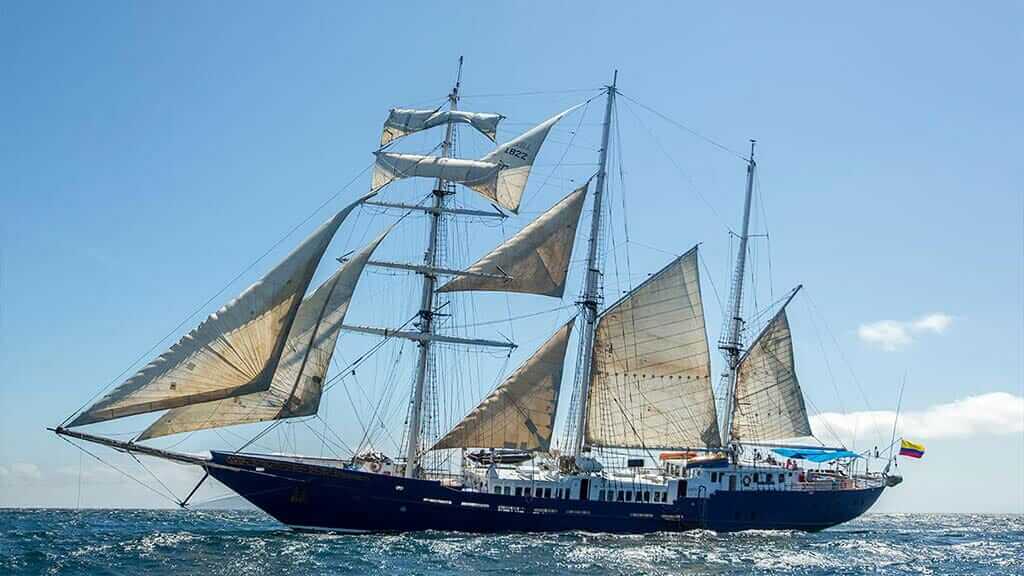
Solaris: The Solaris Yacht is operating since 2019 and is providing a bilingual naturalist guide crew, as well as a cruise director dedicated to serve every need & ensure a smooth travel experience. It is especially interesting for single travellers and families since no single supplement has to be paid and the double cabins can be converted into triple accommodation.
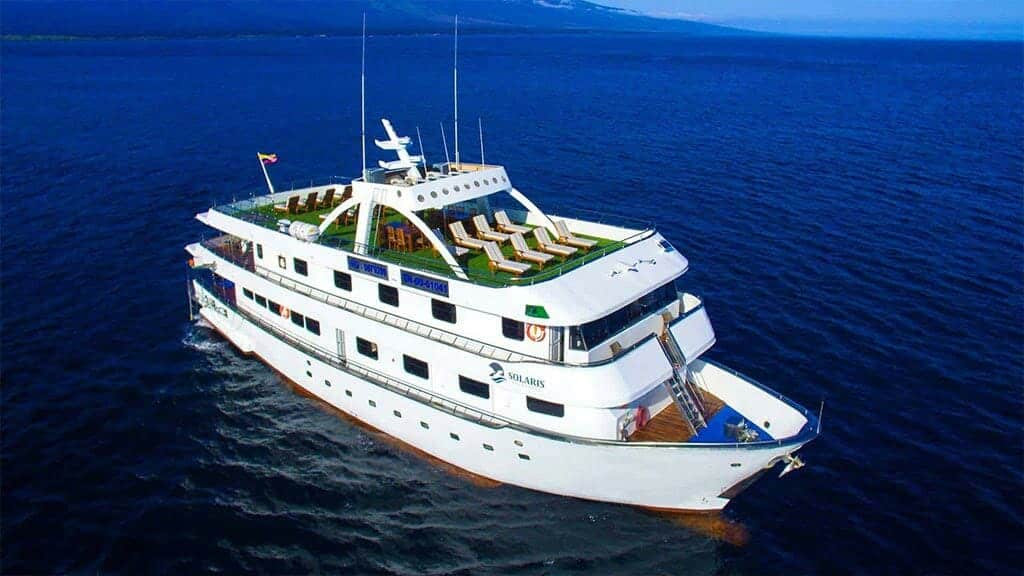
Tip Top II: The Tip Top II catamaran offers various different itineraries ranging from four to 15 days. It was completely redesigned in 2015/16 to provide modern services & facilities and is offering many great activities on land and on board which keeps guests more than entertained! All of these yachts come highly recommended by Eva Merkx, General Manager of Happy Gringo.
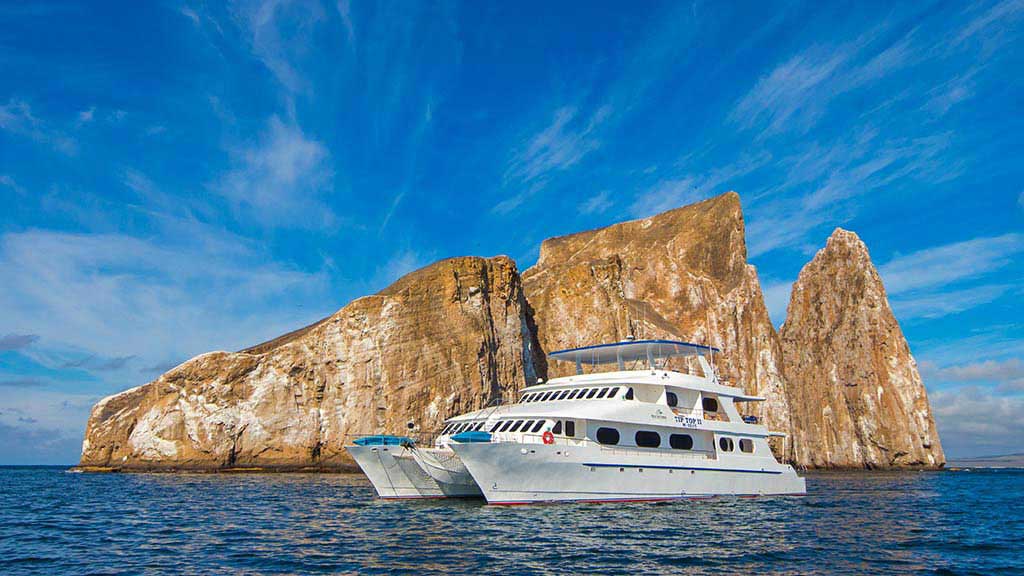
Best Galapagos Land Tours for 2022
Our most popular Galapagos land tour itineraries are:
Galapagos Explorer: The perfect 8-day trip with overnight stays on all three major islands: San Cristobal, Santa Cruz, and Isabela. It provides relaxing travel at your own pace with flexibility to choose between Sierra Negra Volcano trekking or Los Tuneles snorkelling. The tour can be started on any day!
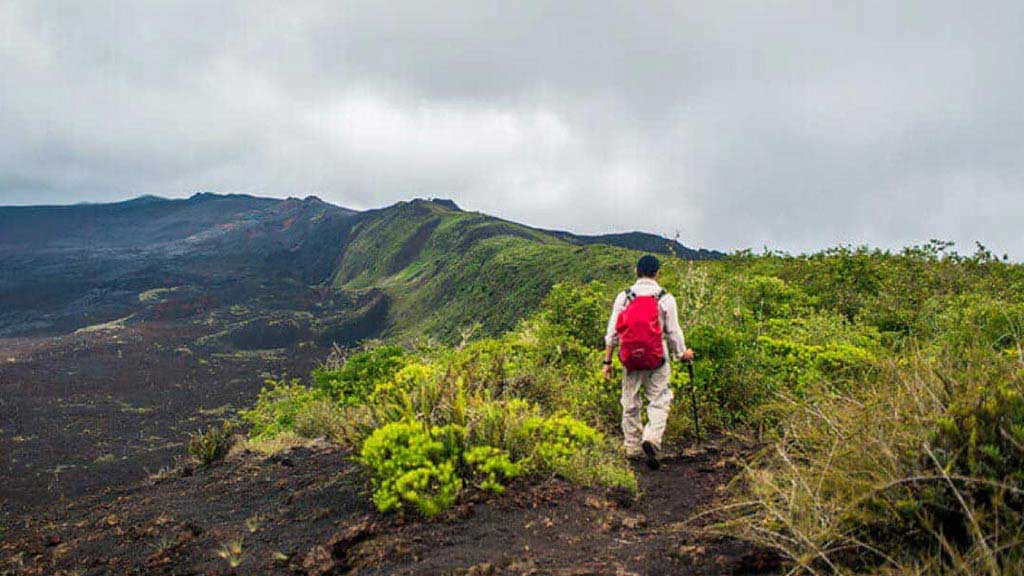
Galapagos Discovery: 6 unforgettable days on the Galapagos Islands while visiting the official National Park sites, snorkelling at Tintoreras Islet & others, watch giant tortoises, blue-footed boobies, sea lions, marine iguanas and much more and spend some free time at stunning Isabela beach.
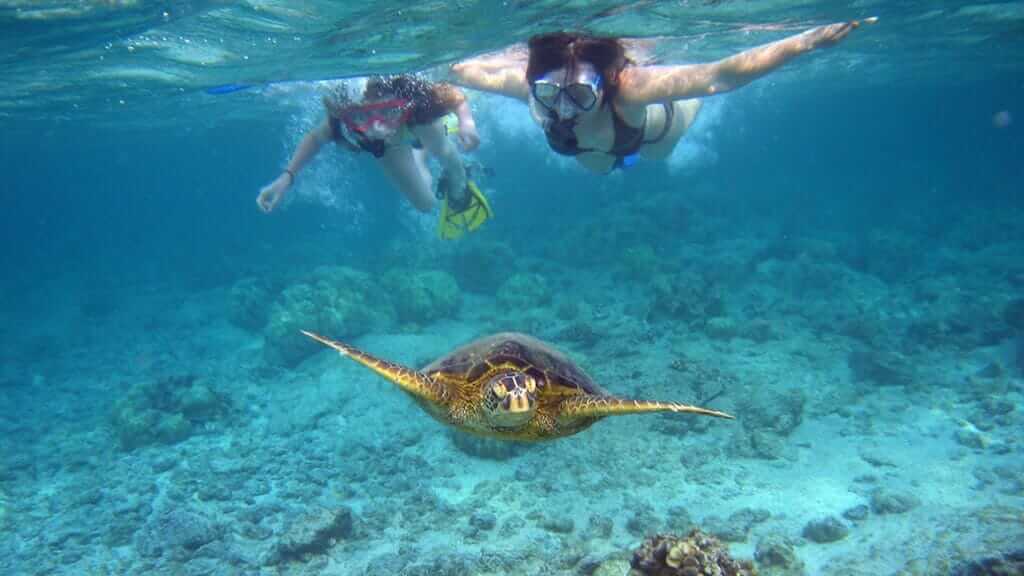
Galapagos Active: The picture-perfect 6 days tour for travellers who like to be active and are interested in not only snorkelling, but also biking, and paddle boarding! Staying on San Cristobal and Santa Cruz offers the possibility to discover two of the most beautiful islands.
Don’t forget that Galapagos land tours are flexible, and can be adapted to your needs .

Where to stay in the Galapagos islands?
It’s also possible to stay at a Galapagos Islands hotel and do your own thing. Happy Gringo can help book accomodation at Santa Cruz hotels, San Cristobal hotels and Isabela Galapagos hotels. Each island has it’s own unique charm and visitor sites.
All inclusive Galapagos resort packages are also worth consideration, especially Galapagos Safari Camp and Finch Bay Galapagos.

Galapagos National Park Rules
In order to protect the fragile Galapagos ecosystem for the animals, and preserve the national park for future generations to enjoy, the Galapagos National Park request that visitors respect 14 simple rules:
1. Stay within the marked trails.
2. Do not feed the birds or animals.
3. No removal of natural elements from the ecosystem, including stones or shells.
4. Camping is only possible in selected areas with prior authorization.
5. Maintain a distance of at least 2 meters (6 feet) from the wildlife.
6. No flash photography or drones are allowed.
7. Dispose of recyclable waste or/and trash in labelled containers, and never leave trash on uninhabited islands.
8. Use only authorized tour operators and/or boats.
9. Private aquatic, motorized vehicles are forbidden.
10. Avoid Purchasing souvenirs made from Galapagos flora or fauna.
11. No foreign elements should be placed in the ecosystem.
12. Fires, smoking, drinking and eating are prohibited on uninhabited islands.
13. Fishing is only allowed on authorized boats by Galapagos National Park.
14. Visitors must explore official visitor sites accompanied by an authorized Naturalist Guide.
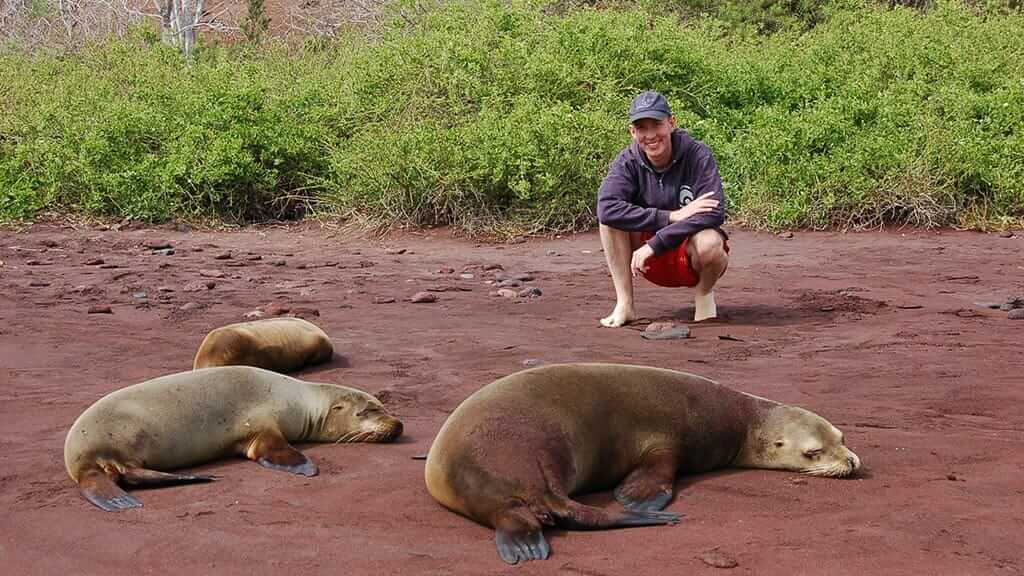
What to pack for the perfect Galapagos vacation?
One final important consideration before you travel is what to pack. Check out our complete Galapagos packing list blog, together with free printable tick box to make packing a breeze.

So, that’s all for our quick Galapagos islands travel guide. We hope the answers have been useful for planning your Galapagos trip. If you have any further questions, just contact us – a Happy Gringo Galapagos expert will quickly be in touch to assist.
It’s clear why the Galapagos islands feature high on so many travel bucket lists. Not only is Galapagos a unique travel destination, it’s also perfect for families, couples, friends and solo travellers. If you are seeking the vacation of a lifetime, look no further – the Galapagos islandsa tick all the right boxes!


